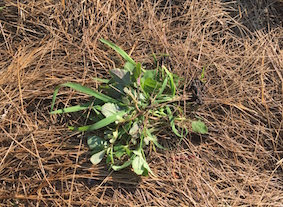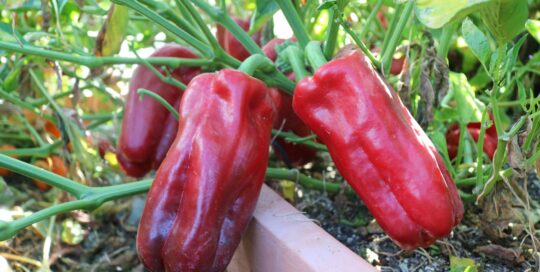Garden Chores Before Frost
Views: 5959

A chill’s in the air here in New England. The nights are consistently cool. They dip to the mid to upper 40s here in Boston proper. Then the days struggle to top 60. It’s time to pull out my favorite bulky sweater, pour myself a thermos of hot apple cider, and head into the vegetable garden for my garden chores.
Due to business travel and just plain busyness, I haven’t spent too much time in the garden so far this fall. No matter. The garden is well on its way to winding itself down. It doesn’t need much help from me right now. The plants that can handle cool weather—my beans, parsley, lettuces and such—are taking care of themselves. Those that don’t, I let them be. They’ll dry in place, making it easier for me to pull them when I put the garden to bed in a few short weeks after the first frost hits.
Building a cold frame
Between now and then, I have two gardening chores. First, I’m making a cold frame. This is a covered space where my cool-season greens can stay cozy when temperatures dip below freezing. I have a good crop of lettuce, radishes, kale, and broccoli rabe seedlings. A cold frame will help extend their growing time. And then, hopefully, allow me to pick fresh homegrown veggies as late as December. Better yet, I can use the cold frame early next spring to germinate an early crop of spinach and other greens.
The easiest way to make your own cold frame is to place hay bales in a rectangle around your cool crops and place old storm windows on top of the bales. With the windows flush against the hay, the air beneath warms up. You can prop open the glass to vent the space on warm fall and winter days.
Since I have a small plot and not much room for hay bales, I’ll create a frame using wood planks, 2×2 boards, and clear-plastic sheeting. Or, I could buy a small cold frame from any of a number of online or brick-and-mortar sources.
Garden Chores: Removing the sunflowers
My second garden chore is removing my old friends, the sunflowers. They topped out at about 10 feet tall and are now bending with age, their seed heads picked clean by birds.
I’ll saw their thick trunks into manageable lengths, pull up their thick root masses, and then place in my yard waste bags. These are the only plants I’ll completely remove from my community garden. Why? The fibrous stems and massive roots are too difficult to work into the soil and too labor intensive to cut down for our garden’s compost bins.
Many of my fellow community gardeners will bag all of their herbaceous waste, which then will be removed by the public works department and turned into compost for the city’s community gardens. So, I may be packing up these sunflowers now, but I’ll see them again—in compost form.
Meet Ellen Wells
When you’re raised on a farm, you can’t help but know a thing or two about gardening. Ellen Wells is our expert on edible gardening.…
Ellen's Recent Posts

Pepper Red Impact an All-America Selections Winner






